
You can easily learn the E Major violin scale with my sheet music and charts – see below!
Whether you’re a beginner or a more experienced player, you’ve likely discovered the importance of mastering different scales to enhance your musical prowess.
In this guide, I would like to teach you how to play the E Major scale and arpeggio, as well as show you a few amazing violin pieces written in this key.
As a starter, you can download my free sheet music below:
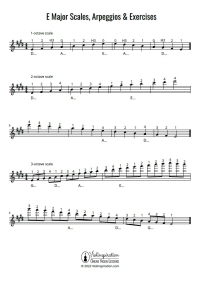
E Major Scales, Arpeggios
and a Bonus Exercise
What Notes Are in the E Major Scale?
The notes of the E major scale are E, F#, G#, A, B, C#, and D#.
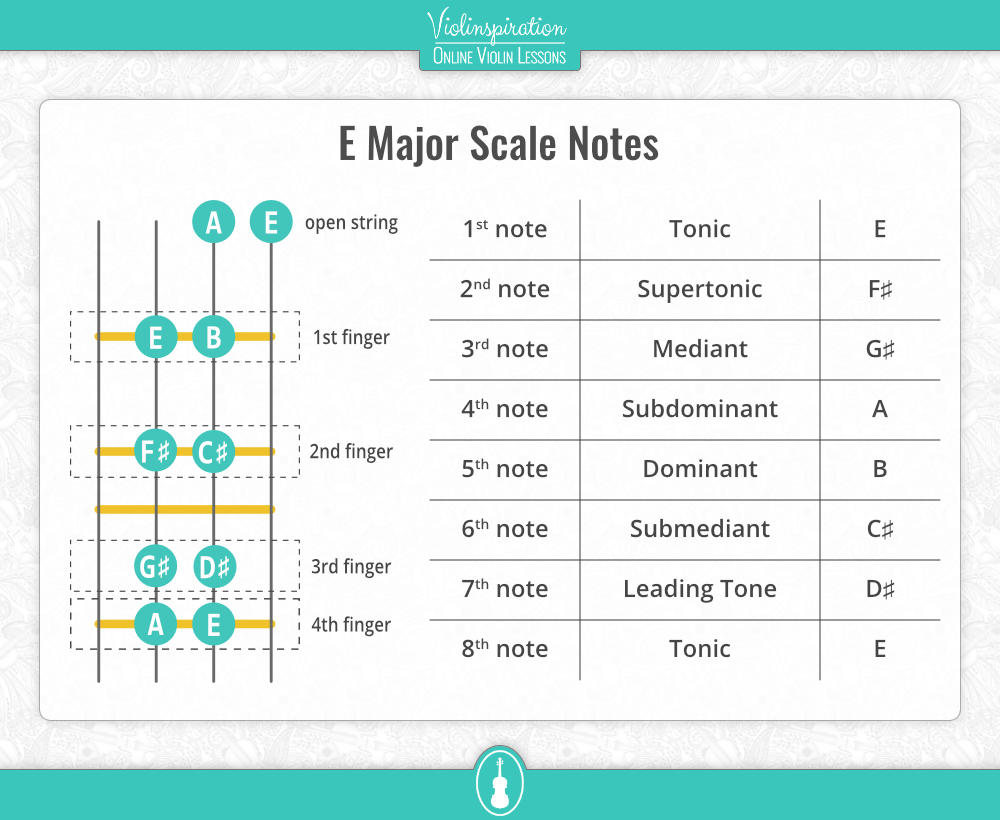
The E Major scale on the violin follows the Major scale pattern of whole and half steps: whole-step, whole-step, half-step, whole-step, whole-step, whole-step, and half-step.
How Do You Play the E Major Scale on the Violin?
The one-octave E Major scale can be played on the violin in the first position.
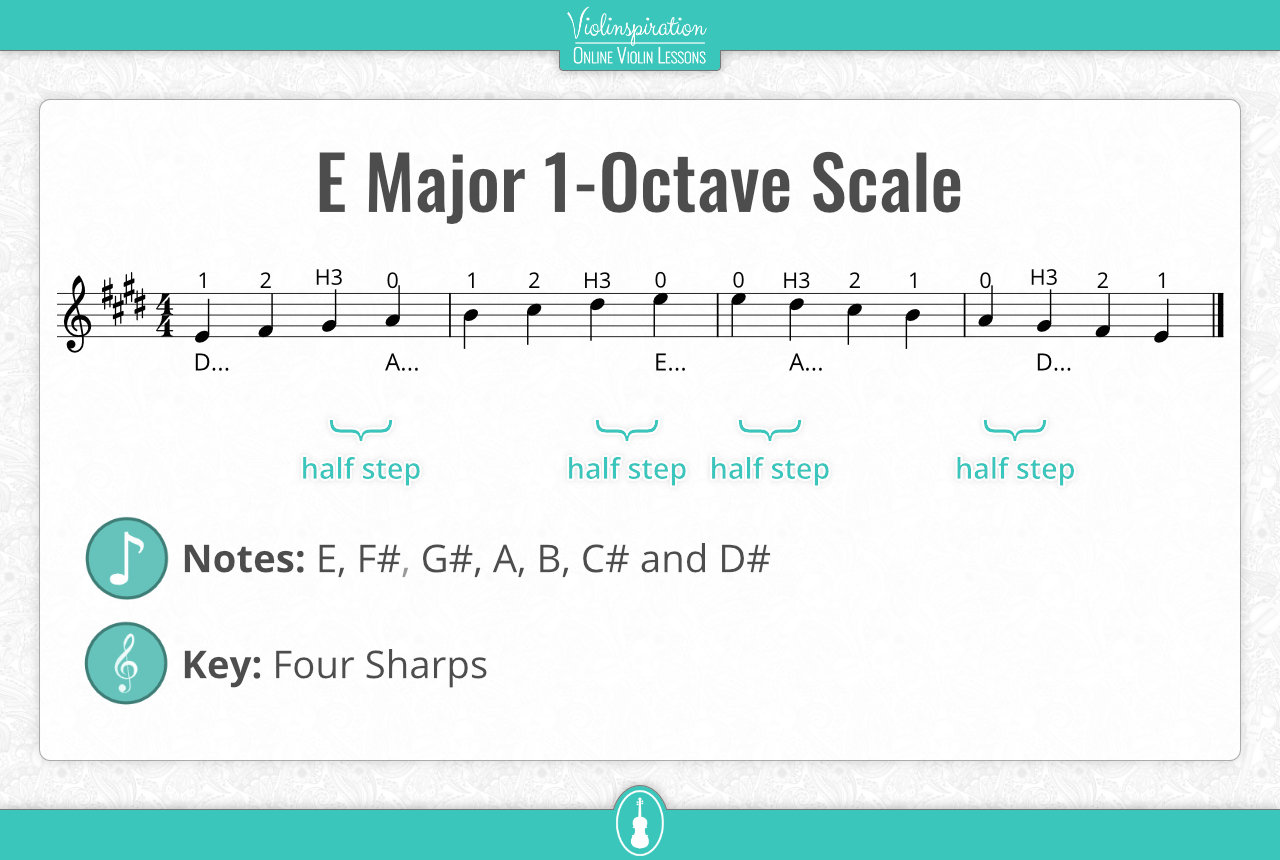
First, play on the D string: the first finger goes on the first tape (the E note), the second finger on the second tape, but the third finger needs to be placed higher than usual – in between its regular position and the fourth tape.
Next, you can play the A note with your fourth finger or choose to play it with an open string. Repeat this pattern on the A string. Again, you can choose between using your fourth finger (the E note) or an E open string.
How Do You Play the E Major Arpeggio on the Violin?
Play the E Major arpeggio on your violin in this way: first play the first, third, and fifth notes of the scale so E, G#, and B notes, and then the high E. Finish the arpeggio by playing the triad in reversed order: B, G#, and E.
For a bigger challenge, you can try playing the 2- or 3-octave E Major arpeggio if you’re comfortable with shifting to higher positions than the first.

E Major Scale on the Violin: 2-octave Scale
The two-octave E Major scale combines playing in the first position and the third position.
First, play one octave in the first position till the C# note. After that, shift to the third position with your first finger and play D. Play E with your second finger in the regular position, and to play F# and G#, put your third and fourth fingers in the high position.
Next, switch to the E string, and play the remaining notes using the same fingering pattern. Lastly, play the highest E note with your extended fourth finger.
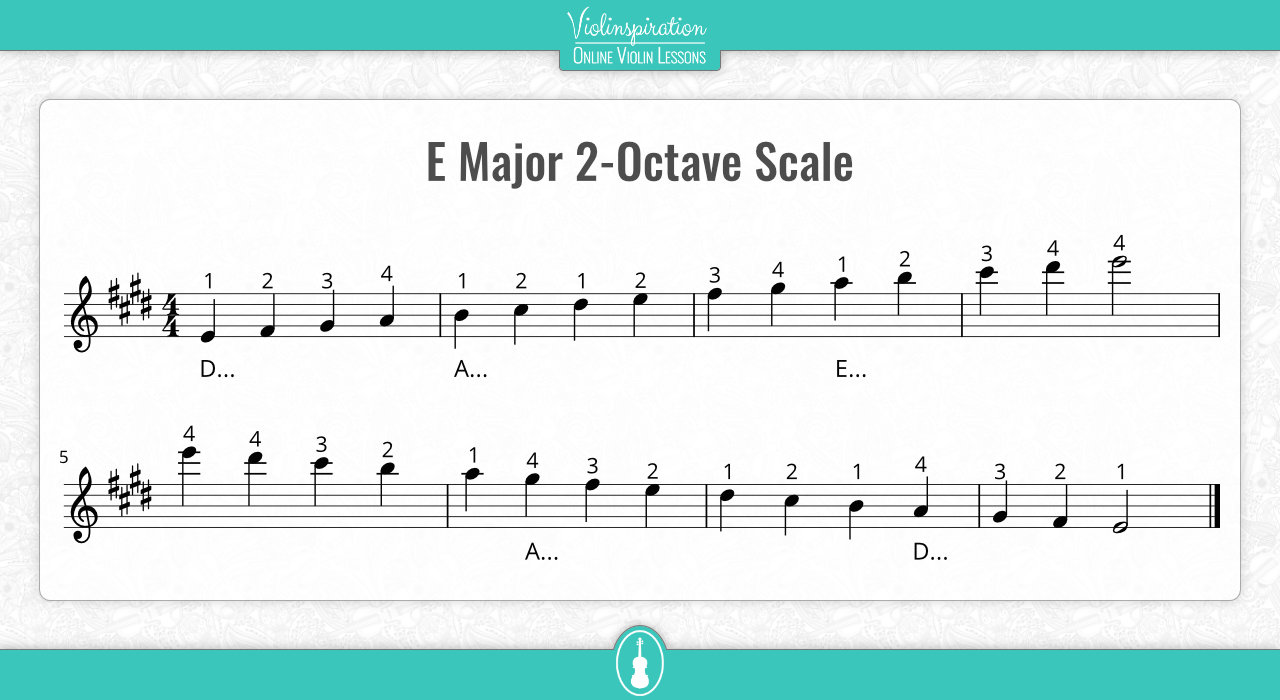
Alternatively, you can play the whole 2-octave scale in the third position. Would you take up this challenge?
E Major Scale on the Violin: 3-octave Scale
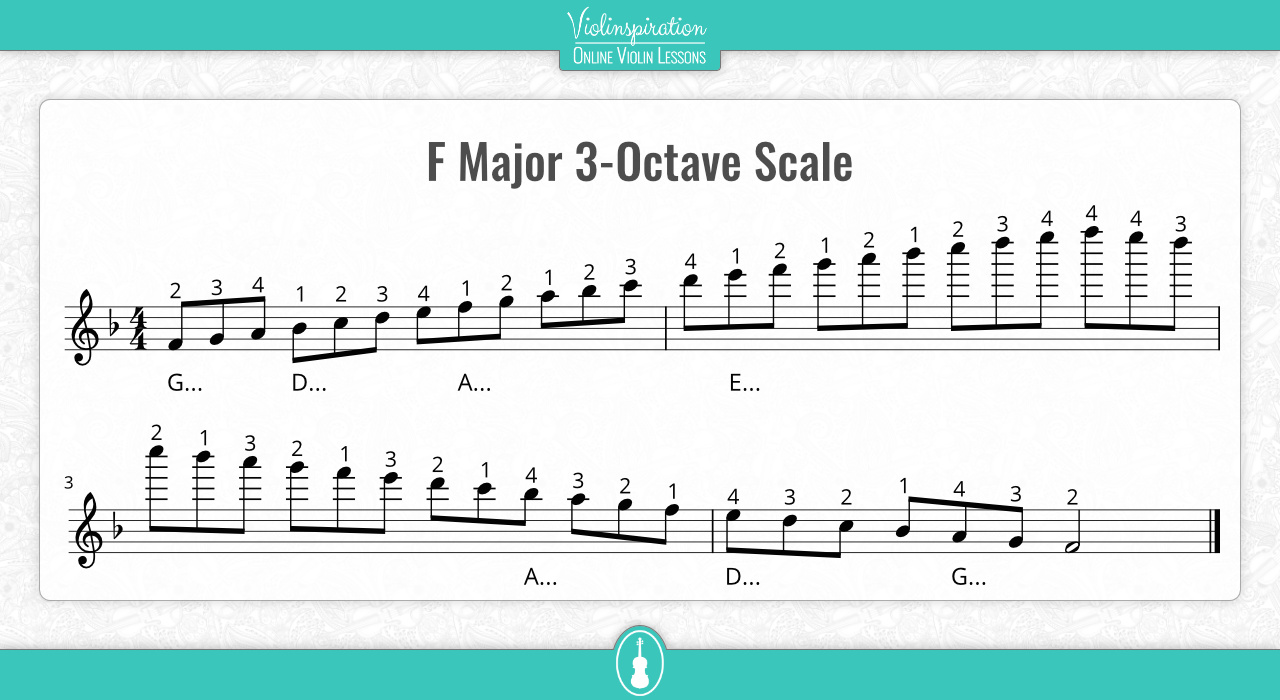
When you’re comfortable with playing in the higher positions, try out the three-octave E Major scale. It starts in the fifth position, so at the beginning you can practice only this part.
Next, check out the fingerings in the chart and practice thoroughly the consecutive shifts together with your intonation, especially in the highest positions.
As a last step, try to play the whole scale up and down with a metronome. Good luck!
Sheet Music of the E Major Scale, Arpeggio, and a Bonus Exercise
Download the E Major free sheet music with a bonus exercise below:

E Major Scales, Arpeggios
and a Bonus Exercise
5 Well-known Pieces in the E Major Scale
Now, let’s dive into some of the famous pieces in the key of E Major.
A. Vivaldi – Spring from The Four Seasons
The first and third movements of Vivaldi’s Spring are in the key of E Major, while the middle, largo section is in C# minor.
Below, you can find my beginner arrangement of the first movement. My arrangement is in the key of A major, which has only three sharps and is all in the first position making it easy for you.
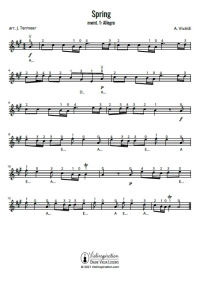
Free Violin Sheet Music
Spring, mvmt. 1: Allegro by A. Vivaldi
If you’re eager to expand your repertoire and learn to play it, make sure to also check out my video tutorial!
For those of you who are up for studying the original Four Seasons, here’s the full violin solo sheet music:
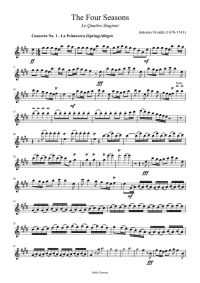
Vivaldi – The Four Seasons – Violin Solo
Free Violin Sheet Music
J.S. Bach – Partita No. 3 in E Major
Originally, partita was a piece of music for a solo instrument that consisted of a series of dance movements. However, Johann Sebastian Bach and several other composers began using it as a synonym for suite, a collection of self-contained instrumental movements of varying character, usually in the same key. This partita is quite long, having six movements, and can take from 15 to 18 minutes to perform.
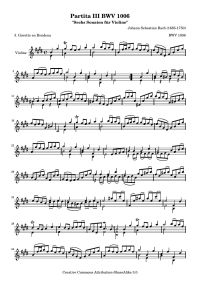
Violin Partita No. 3 in E major, BWV 1006: Gavotte en Rondeau
Free Violin Sheet Music
G.F. Handel – Sonata No. 6 in E Major
When you do a Google search for this piece, you find the composer to be George Frideric Handel, but scholars nowadays call that into question. To whoever the credit belongs, no one can dispute the beauty of this classical piece.
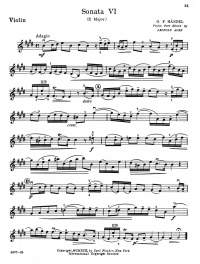
Violin Sonata No. 6 in E major: Adagio
Free Violin Sheet Music
C. Debussy – Prélude à l’après-midi d’un faune
The poem by Stéphane Mallarmé – The Afternoon of a Faun was the inspiration for Dubussy’s famous piece.
The prelude opens with a notable solo flute melody that makes you feel as if you are relaxing on a summer afternoon.
J.S. Bach – Violin Concerto in E Major, BWV 1042
Let’s take one more look at Bach’s repertoire. This concerto is based on the Venetian concerto model in three movements but added so-called un-Italian characteristics. Immerse into the historically informed performance by the Netherlands Bach Society in the video above. Enjoy!
Learn even more…
If you’re a violin newbie, I recommend you first try out my set of 5 most commonly used violin scales available on this link.
While practicing any scale, it’s good to review your left-hand hold – check out my blog post Holding the Violin: Basic Violin Left-Hand Position.
And in case you’re wondering How to Build Your Own Violin Practice Routine, I’ve got a few tips for you too!























